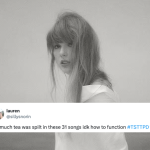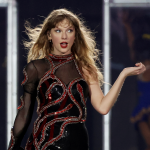
Steph Claire Smith is one of Australia’s most prominent models and social influencers.
The 23-year-old Melburnian boasts a whopping 1.2 million Instagram followers on Instagram. She’s an ambassador for huge global brands like Adidas and Clinique. For the past five years, she’s been traversing the globe shooting countless bikini campaigns in dreamy, exotic locations.
She’s the picture of modern health and wellness, leading a life many of us can only dream of (as we sit and scroll through our Instagrams on dreary lunch breaks).
She began to gain fame online in 2013, when workout pics she posted to her ‘gram started getting reposted by ‘fitness inspo’ Tumblrs and blogs around the world. At 18, she was signed with Chadwick, one of the country’s largest and most prestigious modelling agencies.
Her burgeoning online fanbase no doubt helped secure modelling jobs. Brands had just begun to realise they could reach more and more consumers by employing models with large social followings.
The popularity of Smith’s radiant, impossibly-white smile and toned physique was (and is) a sign of the times. Young girls no longer want to look emaciated. The thin, androgynous model look so many women had struggled to achieve throughout the ’90s and early ’00s has been replaced by squats, squats and more squats. Strong has become ‘the new sexy’.
Smith represents a new breed of model who takes their health seriously, routinely posting photos of gym sessions and painstakingly-prepared acai bowls.
But not all that garners ‘likes’ is gold.
Smith has taken to the YouTube channel she runs with model and best friend Laura Henshaw, Keep It Cleaner Girls, to open up about her battle with body image.
The 24-minute-long video details her lengthy struggle with binge eating, a habit she developed as a 19-year-old after moving to New York to further her modelling career. In the emotionally-charged video, she describes the cut-throat industry in the US, where she was routinely told she needed to decrease her measurements to secure jobs.
“When I got to New York [at 19], and I went to my agency, pretty much the first thing they told me was that I had to lose weight,” she says. “And it was something that I hadn’t really heard before.”
She goes on to describe the lengths she went to to please her agency and drop weight, and how this lead to disordered eating:
They told me I needed to work on my measurements, and of course, being a new model, I was like, “Yep, yep, sure, totally understand, I agree.”
I started working out, even more than I already was. I started to not want to eat out. I would say ‘no’ to friends inviting me out, because I wasn’t in control of what I was eating.
I went back to the agency, and I was losing weight. I thought it was amazing. They measured me, and I was still over the measurements they wanted me to be. They told me to stop doing things like squats, and that I should just try running and yoga and eating less protein. They were measuring me twice a week. They were expecting me to do some pretty unhealthy things.
All of that stress of being super strict led me to binge eating.
Nothing that entered my mouth was unhealthy; but the amount that I was eating was very unhealthy.
While it’s not the first time Smith has opened up about the industry’s impossible beauty standards, it’s the first time she’s gone deep on her personal struggle with disordered eating.
Smith then goes on to describe what an average day of overeating looked like for her:
I would wake up and eat breakfast straight away. It would be something healthy, like a healthy granola I had got a Wholefoods that was all good stuff with yoghurt, berries and nuts. But I would have so much peanut butter; like so so so much peanut butter, way over the amount you should have in a serving. As soon as I put my breakfast down, five minutes later I would make a smoothie. After that, I’d see the peanut butter again and eat a spoonful.
It would come to lunch, I would get my lunch and eat it, then as soon as I got home I would eat snacks. As soon as I walked through the door, I would eat snacks. I would go into the kitchen and grab some corn chips and just eat, and eat and eat. I kept telling myself, “It’s okay because everything’s healthy. It’s fine, you can keep eating, it’s all healthy stuff, it doesn’t matter.”
While Smith mentions that she didn’t necessarily gain a huge amount of weight from her binging, it affected her mindset. She got back to Australia and was “happy as larry” but had developed a habit of overeating:
Any time I became stressed about something, I overate. I put on weight and I would just be depressed. This has gone on and on and on for years and it still affects me to this day.
When I say ‘overeating’, I’m not talking about, you’ve gone out with friends, there’s this amazing feast, or you have people over and you’ve got all these amazing cheese platters and beautiful food. That’s okay to do now and then. I’m not saying you have an eating disorder.
My problem was that I was doing that all the time, for every meal of the day, and in my head, I kept telling myself it was okay. But then, I would later hate myself for it. It was such an unhealthy cycle, I cannot even tell you the kind of emotional rollercoaster that I’ve been on for years.
Between tears, Smith describes how much her followers have helped her overcome her battle, and that they’ve inspired her to be a positive role model. She also cites the mindful eating recipe and lifestyle blog she runs with Laura Henshaw, Keep It Cleaner, as a project that has helped her recalibrate.
(The Keep It Cleaner website and Instagram is well worth is look – the pairs’ approach to eating and wellness is balanced and fun.)
She finishes the video by standing in front of the mirror and describing three things about her physicality that sometimes bothers her:
I’ve never really loved my thighs. They.. I don’t know. They don’t tone up that well. I also have a lot of cellulite, believe it or not, in some lights, which I have grown to realise that most girls do and there’s not a lot you can do about it, because I eat really well and I exercise and it’s still there so… I’m kinda getting over that.
I’ve never really liked my arms. I just, again, never felt like they get very toned. Again, this is what I see, not what others see, and it’s not what I see in other people, it’s what I see in myself which is really sad.
This is a funny one. I pick on my face sometimes because it’s not symmetric. I spose that’s come from the modelling world, where like, for beauty, symmetric faces are great for close ups. But, again, it’s something I’ve learnt to love about myself because when people ask what side is my favourite, I have two different sides! I just put it that way.
And more importantly, she describes three things she loves about herself:
As I said before, when I was younger I actually wanted a softer tummy. But now, my abs is definitely something that I love. And I’m very grateful for.
I love my skin, at the best of times. It’s, as I said when I’m eating well and exercising, I’ve got really good skin. A lot of that is to do with healthy living.
I do love my bum, I will say that. I have gone through stages of not, probably when I was modelling in New York and my measurements weren’t right, a lot of that was to do with my bottom, but I’ve grown to love it. I do love it. I’d much rather have it.
You can watch the video in full here:
https://www.youtube.com/watch?v=DHRWgMNKWRM
The fact that a model as well-known, popular and successful as Smith has come out and chosen to describe her experience with an eating disorder in no uncertain terms is so important, for a few reasons.
Fitness and/or bikini models are often considered ‘healthier’ role models than traditional models, celebrated for their curves and toned physiques. There’s an inherent flaw in this logic. Some runway models are labelled ‘unhealthy’ and berated for their lack of curves, while ‘fit’ models are celebrated. Every body is different, and healthy does come in every size. The way someone looks on the outside is no indication of how they’re doing on the inside.
Second, becoming obsessed with ‘healthy’ living and all the green smoothies, organic granolas and avocados that come along with it can become unhealthy. This phenomena has a name – Orthorexia Nervosa – and it’s a condition where people become obsessed with maintaining a healthy diet at all costs. It’s an eating disorder, sort of in disguise, and one that we need to be mindful of as a society.
Finally, Smith’s candid video proves something that’s easy to forget. Writing this feels lame, but… Instagram isn’t real life. Deep down we know this, but it’s near impossible to use the platform without feeling a twinge of jealousy or envy at others’ highly curated lives. The very design of the platform invites feelings of inadequacy in the most confident among us. If you feel like you need to take a break from the platform, there’s nothing wrong with that – your mental health is more important than any number of ‘likes’ or ‘followers’.
Most chiefly, Smith’s honesty is sobering reminder that we need to be kinder to ourselves, and to others. Empathy mightn’t make for the most fire flat lay, but it’s damn important for our mental wellbeing.



